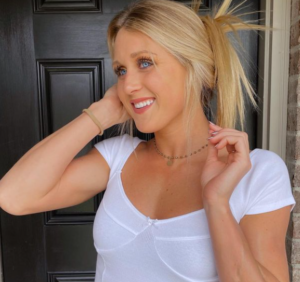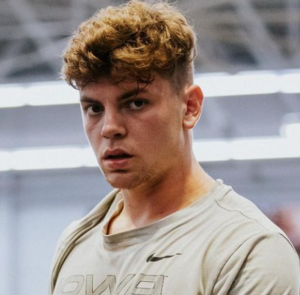TS Grewal Accountancy Class 11 Solutions Chapter 2 Accounting Equation
If you are looking for TS Grewal Accountancy Class 11 Solutions Chapter 2 Accounting Equation then you have landed at the right place. This post will explain all about the TS Grewal Accountancy Class 11 Chapter 2 solution and this post provides the solutions of each and every question with related images. We hope this Chapter 2 solution will help you in the preparation for your exam.
Class 11, Accountancy Chapter 2, Accounting Equation solutions are given below in PDF format. You can view them online or download PDF file for future use.
Question 1.
What will be effect of the following on the Accounting Equation?
(i) Started business with cash ₹ 45,000
(ii) Opened a Bank Account with a deposit of ₹ 4,500
(iii) Bought goods from M/s. Sun & Co. for ₹ 11,200
Solution:
Question 2.
Show the Accounting Equation for the following transactions:
Solution:
Question 3.
Show the effect of the following transactions on the Accounting Equation:
(i) Started business with cash ₹ 50,000.
(ii) Salaries paid ₹ 2,000.
(iii) Wages Outstanding ₹ 200.
(iv) Interest due but not paid ₹ 100.
(v) Rent paid in advance ₹ 150.
Solution:
Question 4.
What will be the effect of the following on the Accounting Equation?
(i) Harish started business with cash ₹ 18,000
(ii) Purchased goods for Cash ₹ 5,000 and on credit ₹ 2,000
(iii) Sold goods for cash ₹ 4,000 (costing ₹ 2,400)
(iv) Rent paid ₹ 1,000 and Rent Outstanding ₹ 200
Solution:
Question 5.
Prepare Accounting Equation from the following:
(i) Started business with cash ₹ 1,00,000 and Goods ₹ 20,000.
(ii) Sold goods worth ₹ 10,000 for cash ₹ 12,000.
(iii) Purchased furniture on credit for ₹ 30,000
Solution:
Question 6.
Prepare an Accounting Equation and Balance Sheet on the following basis:
(i) Ajeet started business ₹ 20,000.
(ii) He purchased furniture for ₹ 2,000.
(iii) He paid rent of ₹ 200.
(iv) He purchase goods on credit ₹ 3,000.
(v) He sold goods (cost price ₹ 2,000) for ₹ 5,000 on cash.
Solution:
Question 7.
Prepare an Accounting Equation from the following:
(i) Started business with cash ₹ 1,00,000.
(ii) Purchased goods for cash ₹ 20,000 and on credit ₹ 30,000.
(iii) Sold goods for cash costing ₹ 10,000 and on credit costing ₹ 15,000 both at a profit of 20%.
Solution:
Question 8.
Develop an Accounting Equation from the following transactions:
Solution:
Question 9.
Prepare an Accounting Equation on the basis of the following transactions:
(i) Started business with Cash ₹ 70,000
(ii) Credit purchase of goods ₹ 18,000
(iii) Payment made to creditor ₹ 17,500 in full settlement
(iv) Purchase of Machinery for Cash ₹ 20,000
(v) Depreciation on Machinery ₹ 2,000
Solution:
Question 10.
Prove that the Accounting Equation is satisfied in all the following transactions of Suresh. Also prepare a Balance Sheet.
(i) Commenced business with cash ₹ 60,000.
(ii) Paid Rent in Advance ₹ 500.
(iii) Purchased goods for Cash ₹ 30,000 and Credit ₹ 20,000.
(iv) Sold goods for Cash ₹ 30,000 Costing ₹ 20,000.
(v) Paid Salary ₹ 500 and Salary Outstanding being ₹ 100.
(vi) Bought motorcycle for personal use ₹ 5,000.
Solution:
Question 11.
Show the effect of the following transactions on assets, liabilities and capital using the Accounting Equation. Also prepare a Balance Sheet:
(i) Started business with Cash ₹ 60,000
(ii) Rent Received ₹ 2,000
(iii) Accrued Interest ₹ 500
(iv) Commission received in advance ₹ 1,000
(v) Amount withdrawn ₹ 5,000
Solution:
Question 12.
Prove that the Accounting Equation is satisfied in all the following transactions of Sameer Goel:
(i) Started business with cash ₹ 10,000.
(ii) Paid rent in Advance ₹ 300.
(iii) Purchased goods for cash ₹ 5,000 and credit ₹ 2,000.
(iv) Sold goods for cash ₹ 8,000 costing ₹ 4,000.
(v) Paid salary ₹ 450 and salary outstanding being ₹100.
(vi) Bought motorcycle for personal use ₹ 3,000.
Solution:
Question 13.
Show the Accounting Equation on the basis of the following transactions and present a Balance Sheet on the last new equation balance:
Solution:
Question 14.
Raghunath had the following transactions in an accounting year:
(i) Commenced business with cash ₹ 50,000.
(ii) Paid in to bank ₹ 10,000.
(iii) Purchased goods for Cash ₹ 20,000 and Credit ₹30,000.
(iv) Sold goods for Cash ₹ 40,000 Costing ₹ 30,000.
(v) Rent paid ₹ 500.
(vi) Rent Outstanding ₹ 100.
(vii) Bought furniture ₹5,000 on credit.
(viii) Bought refrigerator for personal use ₹ 5,000.
(ix) Purchased motorcycle for cash ₹ 20,000.
Create an Accounting Equations to show the effect of the above transaction on his assets, liabilities and capital and also show his final Balance Sheet.
Solution:
Question 15.
Prepare an Accounting Equation from the following :
(i) Started business with cash ₹ 50,000 and goods ₹ 30,000.
(ii) Purchased goods for cash ₹ 30,000 and on credit from Karan ₹ 20,000.
(iii) Goods costing ₹ 40,000 were Sold for ₹ 55,000.
(iv) Withdrew cash for personal use ₹ 10,000.
(v) Rent outstanding ₹ 2,000.
Solution:
Question 16.
Show an Accounting Equation for the following transactions:
(i) D. Mahapatra commenced business with cash of ₹ 50,000 and ₹ 1,00,000 by cheque; goods ₹ 60,000; machinery ₹ 1,00,000 and furniture ₹ 50,000.
(ii) 1/3 rd of above goods sold at a profit of 10% on cost, and half of the payment is received in cash.
(iii) Depreciation on machinery provided @ 10%.
(iv) Cash withdrawn for personal use ₹ 10,000.
(v) Interest on drawings charged @ 5%.
(vi) Goods Sold to Gupta for ₹ 10,000 and received a Bill Receivable for the same amount for 3 months.
(vii) Received ₹ 10,000 from Gupta against the Bill Receivable on its maturity.
Solution:
Working Note:
Rs.60,000 × 1/3 = Rs.20,000 × 110% = Rs.22,000
Half received in Cash = Rs.11,000
Question 17.
Prepare Accounting Equation from the following:
(a) Started business with cash ₹ 1,00,000.
(b) Purchase goods for cash ₹ 20,000 and on credit ₹ 30,000.
(c) Sold goods for cash costing ₹ 10,000 and on credit costing ₹ 15,000 both at a profit of 20%.
(d) Paid salaries ₹ 8,000.
Solution:
Question 18.
Show the accounting equation on the basis of following transactions:
(a) Ram started business with ₹ 25,000.
(b) Purchased goods from Shyam ₹ 10,000.
(c) Sold goods to Sohan costing ₹ 1,500 for ₹ 1,800.
Solution:
Question 19.
If the capital of a business is ₹ 3,00,000 and liabilities are ₹ 50,000, loss ₹ 70,000, calculate the total assets of the business.
Solution:
Total Assets = Capital – Loss + Liabilities = Rs.3,00,000 – Rs.70,000 + Rs.50,000 = Rs.2,80,000
Total Assets of the business is Rs.2,80,000
Question 20.
If total assets of a business are ₹ 1,30,000 and net worth is ₹ 80,000, calculate the creditors.
Solution:
Creditors = Total Assets – Net worth = Rs.1,30,000 – Rs.80,000 = Rs.50,000
Creditors is Rs.50,000.
Question 21.
A commenced his cloth business on 1st April, 2017 with a capital of ₹ 30,000. On 31st March 2018, his assets were worth ₹ 50,000 and liabilities of ₹ 10,000. Find out his closing capital and profits earned during the year.
Solution:
Closing Capital = Assets – Liabilities = Rs.50,000 – Rs.10,000 = Rs.40,000
Profit = Closing Capital – Opening Capital = Rs.40,000 – Rs.30,000 = Rs.10,000
Question 22.
If capital of a business is ₹ 1,40,000 and liabilities are of ₹ 80,000, calculate the total assets of the business.
Solution:
Total Assets = Liabilities + Capital = Rs.80,000 + Rs.1,40,000 = Rs.2,20,000
Total Assets of the business is Rs.2,20,000
Question 23.
Calculate the total assets if:
(i) Capital is ₹ 40,000.
(ii) Creditors are ₹ 25,000.
(iii) Revenue during the period is ₹ 50,000.
(iv) Expenses during the period are ₹ 40,000.
Solution:
Capital after Adjustments = Capital + Revenue – Expenses = Rs.40,000 + Rs.50,000 – Rs.40,000 = Rs.50,000
Total Assets = Capital after adjustment + Creditors = Rs.50,000 + Rs.25,000 = Rs.75,000
Question 24.
(a) A had a capital of ₹ 75,000 on 1st April, 2017. He had also goods amounting to ₹ 15,000 which he had purchased on credit and the payment had not been made. Find out the value of the total assets of the business.
(b) After a period of one month, he came to know that he had suffered a loss of ₹ 1,700. He withdrew ₹ 800 for his personal use. Find out his capital and assets of the business.
Solution:
a. Total Assets = Capital + Creditors = Rs. 75,000 + Rs. 15,000 = Rs. 90,000
b. Revised Capital = Capital – Loss – Drawings = Rs. 75,000 – Rs. 1,700 – Rs. 800
i. Revised Capital = Rs. 72,500
Assets = Revised Capital + Creditors = Rs. 72,500 + Rs. 15,000
ii. Assets = Rs. 87, 500
Question 25.
(a) Mohan started a business on 1st April, 2017 with a capital of ₹ 10,000 and borrowed ₹ 3,000 form a friend. He earned a profit of ₹ 5,000 during the year ended 31st March, 2018 and withdrew cash ₹ 4,000 for private use. What is his capital on 31st March, 2018 ?
(b) Mahesh started a business with a capital of ₹ 15,000 on 1st April, 2017. During the year, he made a profit of ₹ 3,000. He owes ₹ 2,500 to suppliers of goods. What is the total of assets in his business on 31st March, 2018 ?
Solution:
Mohan Started the Business
a. Capital on 31st March 2018 = Capital on April 01,2017 + Profit – Drawings
= Rs.10,000 + Rs.5,000 – Rs.4,000 = Rs.11,000
Mahesh Started the Business
b. Total Assets on 31st March 2018 = Capital on April 01, 2017 + Profit + Creditors
= Rs.15,000 + Rs.3,000 + Rs.2,500 = Rs.20,500
Question 26.
Mohan started a business on 1st April, 2017 with a capital of ₹ 25,000 and a loan of ₹ 12,500 borrowed from Shyam. During 2017-18 he had introduced additional capital of ₹ 12,500 and had withdrawn ₹ 7,500 for personal use. On 31st March, 2018 his assets were ₹ 75,000. Find out his capital as on 31st March, 2018 and profit made or loss incurred during the year 2017-18.
Solution:
Mohan Started the Business
Capital on 31st March 2018 = Assets – Loan from Shyam = Rs.75,000 – Rs.12,500 = Rs.62,500
Profit (or Loss) during the year 2017 – 18 = Capital on March 31, 2018 + Drawings – (Capital on April 01,2017 + Additional Capital)
= Rs. 62,500 + Rs. 7,500 – (Rs. 25,000 + Rs. 12,500) = Rs.70,000 – Rs.37,500 = Rs.32,500
Question 27.
On 31st March, 2018, the total assets and external liabilities were ₹ 2,00,000 and ₹ 6,000 respectively. During the year, the proprietor had introduced capital of ₹ 20,000 and withdrawn ₹ 12,000 for personal use. He made a profit of ₹ 20,000 during the year. Calculate the capital as on 1st April, 2017.
Solution:
Capital on 31st March 2018 = Total Assets – External Liabilities = Rs. 2,00,000 – Rs. 6,000 = Rs. 1,94,000
Capital on 01st April 2017 = Capital on March 31, 2018 – Additional Capital + Drawings – Profit
= Rs. 1,94,000 – Rs. 20,000 + Rs. 12,000 – Rs. 20,000 = Rs. 1,66,000
Question 28.
Show an Accounting Equation on the basis of the following transactions:
Solution:
Question 29.
Draw an Accounting Equation on the basis of the following transactions:
(i) Commenced business with cash ₹ 50,000, cheque ₹ 1,00,000, goods ₹ 30,000 and furniture ₹ 20,000.
(ii) Car, personal asset of the proprietor, was sold for ₹ 1,00,000 against cheque which he deposited in his Savings Account.
(iii) An amount of ₹ 50,000 was transferred from his Savings Account to the firm’s Bank Account.
(iv) A new car was purchased for ₹ 6,00,000 for office use. It was paid by taking loan from Bank of ₹ 5,00,000 and balance by issue of cheque from firm’s Bank Account.
(v) Sold goods to Ajay on credit costing ₹ 4,000 for ₹ 5,000.
(vi) Sold goods for cash costing ₹ 12,000 for ₹ 16,000.
(vii) Purchased good for cash ₹ 40,000.
(viii) Purchased goods on credit for ₹ 20,000.
(ix) Paid rent ₹ 3,000 including ₹ 2,000 in advance.
(x) Paid salaries ₹ 2,000.
(xi) Sold goods costing ₹ 8,000 for ₹ 10,000.
(xii) Salaries outstanding ₹ 1,000.
(xiii) Charge depreciation on furniture ₹ 500.
Solution:
Note: In transaction (ii), there is no impact on the Accounting Equation, therefore it is not shown in the above statement.
If you have any questions regarding TS Grewal Accountancy Class 11 Solutions Chapter 2 Accounting Equation, then feel free to drop a comment and we will try to provide the solution at the earliest.
































